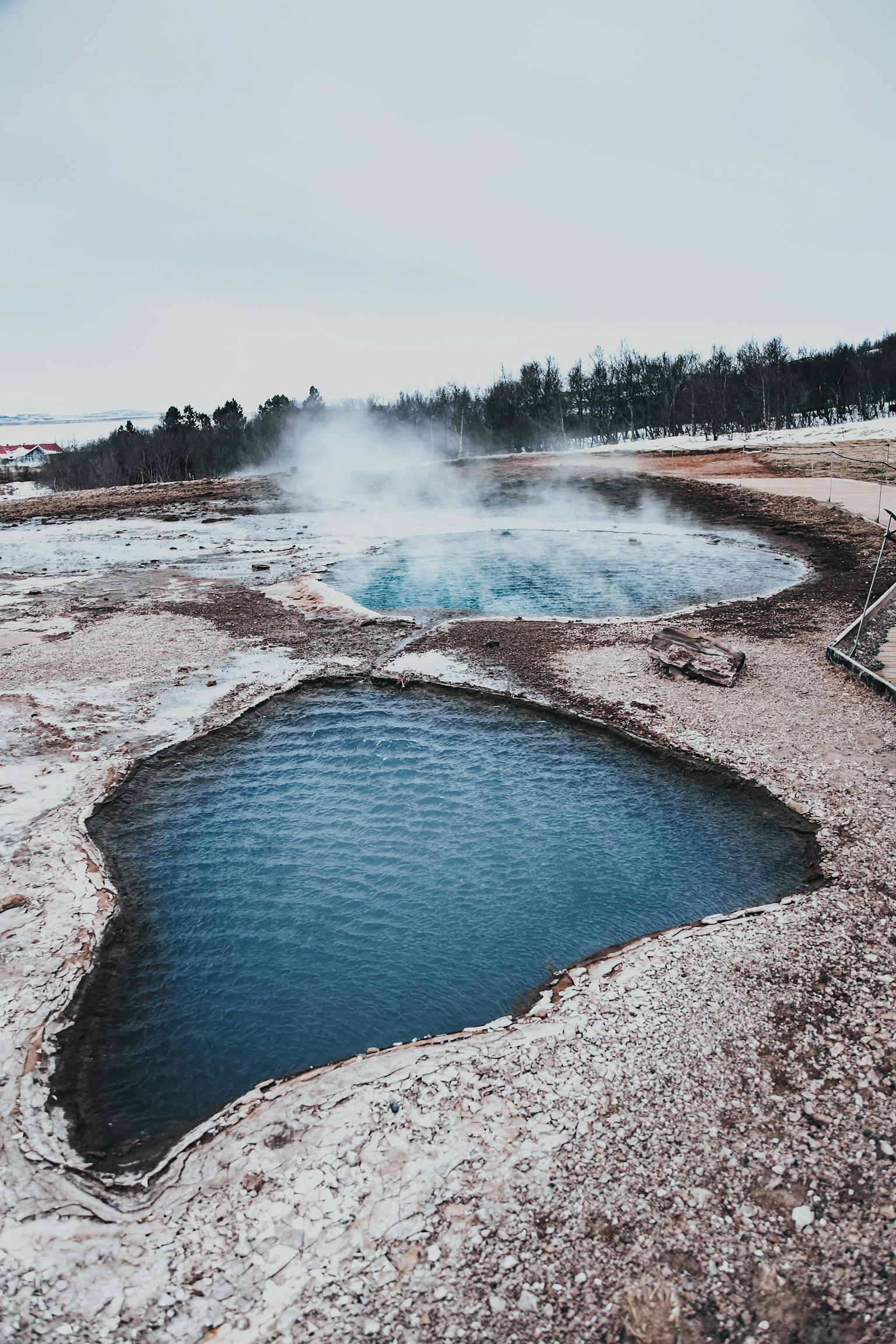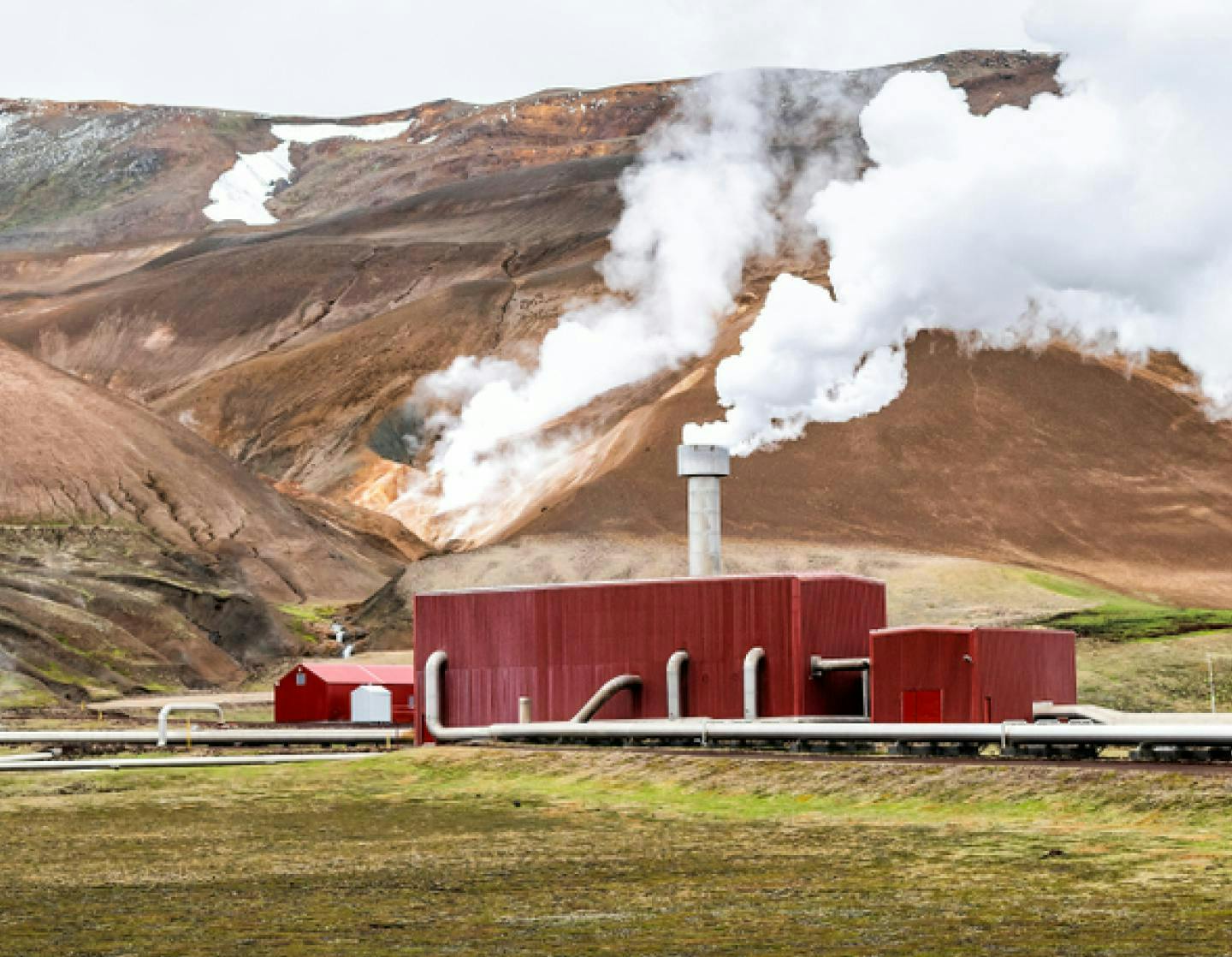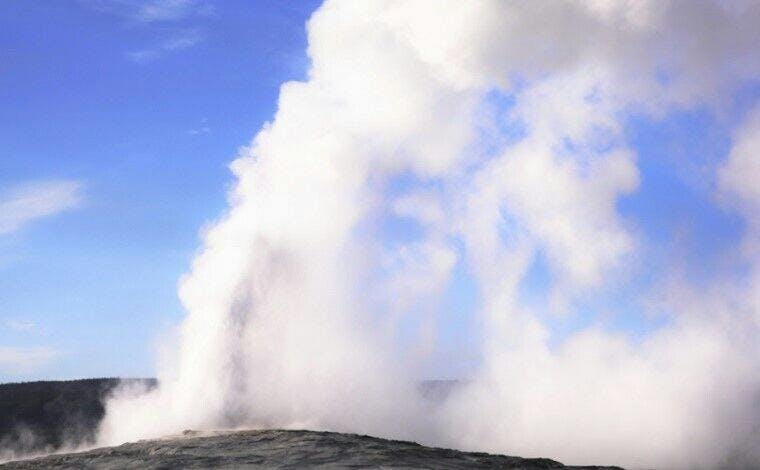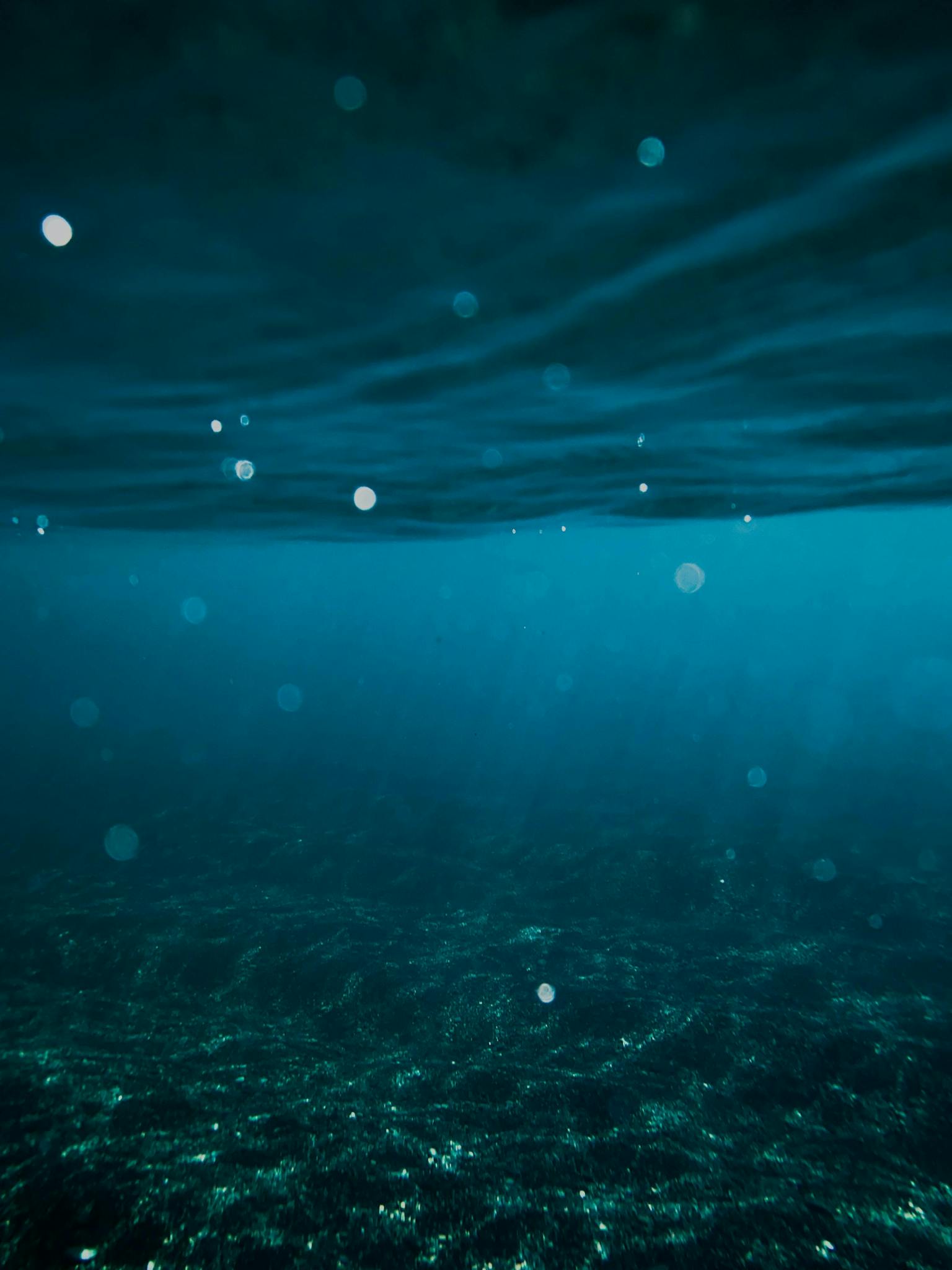Geothermal
One of the greatest resources of Iceland is geothermal energy, and Iceland is among those countries that utilize this energy source the most on a global scale.
One of Iceland’s greatest resources is geothermal energy, and it is one of the countries that uses this energy source the most worldwide. Geothermal energy is more important for the energy economy of Iceland than anything else and accounts for over 60% of primary energy consumption in Iceland due to its use for the production of hot water and electricity, for horticulture and other uses.
Geothermal energy in Iceland is rooted in precipitation that comes into contact with hot bedrock, similar to what happens at plate junctions elsewhere on Earth. There are high-temperature zones in the active eruption and plate tectonic belt, where magma is found in many places at a depth of several kilometres. The low-temperature areas are in older parts of the Earth's crust that has cooled somewhat as it has drifted out from the volcanic belts. In the last century, a lot of effort was put into using geothermal energy for domestic heating. In recent years, a considerable amount of electricity has also been produced in geothermal power plants. Such power plants are usually located in high-temperature areas and in many cases also produce hot water alongside the electricity production.
Role of the National Energy Authority
The National Energy Authority (NEA) is responsible for the administration of research and utilization of geothermal energy in Iceland according to Natural Resources Act no. 57/1998. The NEA’s license is required to use ground resources with certain exceptions, and the agency can also grant permission for others to conduct geothermal research. The institute also manages a large database of geothermal research and exploitation, with the prime example being the borehole register [link] and statistical information in Energy Statistics. Information on geothermal drilling is required to be submitted to the NEA. The NEA also collects and publishes data on geothermal utilization as part of regular monitoring.
The NEA works closely with other public bodies involved in the use of geothermal energy and construction related to it. The Environmental Agency of Iceland and the Icelandic Institute of Natural History play an important role, such as by providing reviews to the NEA regarding applications for geothermal licences, but also because many geothermal areas are partially or completely protected. Local authorities are responsible for local planning matters and the granting of building permits, and the National Planning Agency handles environmental assessment and planning matters. There is also cooperation with energy and utility companies and their association, Samorka, as well as the Iceland Renewable Energy Cluster and GEORG, a research cluster in the field of geothermal energy. The NEA has been a member of the Iceland Deep Drilling Project, IDDP, since the beginning and also cooperates on the international arena in the field of geothermal energy utilization (place here a link to a discussion of foreign projects). This is not an exhaustive list, as geothermal energy plays an important role in Icelandic society.

Licensing and applications
The National Energy Authority (NEA) grants licenses for the exploration and investigation of geothermal energy, regardless of whether it is on private or public land, in accordance with the Law on research and utilization of resources in the ground, no. 57/1998 (Resources Act). If an exploration or investigation is carried out by the landowner, the NEA’s permission is not required, but a plan and description of the planned drilling, blasting, construction of mine tunnels or other significant works for this purpose must be sent to it.
The use of ground resources is subject to licensing from the NEA according to natural resources law, whether it is for the use of resources on private or public lands. However, a landowner is permitted to use up to 3.5 MW for household and farm needs without a permit, based on the total amount of thermal energy taken from the ground within the property. However, the NEA must be notified about planned ground drilling and other major constructions.
The NEA also issues research and utilization licenses for microorganisms in accordance with the Natural Resources Act and regulations no. 234/1999, but control is in the hands of the Icelandic Institute of Natural History.
The agency also issues power generation licenses for geothermal power plants according to Electricity Act no. 65/2003, on the basis that a utilization license is in place beforehand. However, a power generation license is not required for power plants with an installed capacity of less than 1 MW, unless the energy from the power plant is delivered to the distribution system of distribution companies or to the transmission system. For backup power stations that have the sole role of providing power for their own use due to breakdowns, lack of transmission capacity, lack of energy or other factors, an activation permit is not required. Owners of power plants with an installed capacity of 30–1,000 kW must submit technical information about the power plant to the NEA. It is also mandatory to notify the NEA annually about the total electricity production of power plants with an installed capacity of over 100 kW.
In cases where the planned projects fall under the provisions of the Act on Environmental Assessment of Projects and Plans, no. 111/2021, the National Planning Agency's conclusion that the implementation is not subject to assessment, or the agency's opinion on the project's assessment report, must also be available before the license application is sent to the NEA.
Supervision
According to the Energy Act No. 87/2003, one of the National Energy Authority’s (NEA) main roles is to collect data on energy sources and other natural resources, their utilization and the country's energy economy, preserve them and disseminate information to the government and the public. In order to carry out this role, the NEA is authorized to request data concerning the utilization of terrestrial resources, energy production and energy consumption.
Law no. 57/1998 on the research and utilization of resources in the ground provides more detail on the supervisory role of the NEA, together with the information and reporting obligations of license holders. Exploration, research and exploitation licenses usually stipulate in more detail the arrangement and estimated scope of monitoring with a specific license. In those cases, the minimum number of hours for monitoring and data submission, without comments, is considered.
The NEA's monitoring of resource utilization is divided into four categories:
Internal monitoring
Internal monitoring is the license holder's own control of his own activities, carried out by his employees or a hired service provider, who has the required permits for this purpose, in order to ensure that the requirements in the license, laws and regulations are met.
Regular monitoring
It is assumed that regular inspections of permits are carried out annually. In regular monitoring, it is ascertained whether the activities of license holders/recipients are in accordance with laws, regulations and licenses, both by making site visits and also by conducting general supervision of license holders.
The scope of supervision includes, on the one hand, on-site supervision and, on the other hand, the receiving and reviewing of data, suggestions and inquiries regarding the activities. The ratio of the time spent on an on-site inspection versus other types of monitoring (monitoring from the office) varies considerably depending on the type of activity, and therefore the amount of time billed for the inspection of licensed activities that fall within the same category may vary.
Unannounced monitoring/Incidental monitoring
Unscheduled and unannounced on-sight inspections are done following tips or indications of deviations from permits. In general, unannounced inspections are only used to investigate serious and/or repeated violations of the conditions of exploration, research and exploitation permits. An unannounced inspection shall be carried out as soon as possible and, as is appropriate, prior to the granting, revision or renewal of a permit.
Additional monitoring
If an inspection reveals a significant violation of permit conditions, an additional inspection must be carried out within 6 months from the time the violation occurred, or knowledge of the violation reached the supervisory body.
Follow-up due to deviations is billed according to an hourly rate, and should the need for extensive monitoring arise, e.g., due to suggestions, data submission or other unforeseen factors, the NEA will charge an additional fee according to rates and real-time registrations in the organization's project accounting.
Numerical information
The National Energy Authority collects data on geothermal utilization, incl. geothermal processing, production in geothermal power plants, etc.
Geothermal production, or the primary energy use of geothermal heat, is over 170 PJ per year, and is divided between users like this:
Specific information
Geothermal energy is one of Iceland's most important resources, and there are records of its use since the 13th century when Snorri Sturluson built a pool in Reykholt. Swimming pools, hot tubs and other bathing places are an integral part of Icelandic culture, and geothermal energy is therefore closely connected to the soul of the nation. The initial reasons for the large-scale exploitation of geothermal energy in the first decades of the last century were not environmental protection or climate considerations, but the financial concerns of a poor nation. It was believed that large sums of money could be saved by stopping the use of foreign fossil fuels for domestic heating by instead using domestic resources as the price would be more stable. This would also create more energy security, but there were examples of people not being able to afford fuel for heating in the first decades of the 20th century when there was a great shortage of fuel and the price skyrocketed due to warfare around the world. Even today, Iceland benefits from this decision, and heating costs here are among the lowest in the world.
In the Natural Resources Act, the term geothermal means "on the one hand geothermal reserves in rock in the Earth's crust, and on the other hand a constant flow of heat from the bowels of the earth that is not considered groundwater." The boundary between geothermal water and groundwater is usually obvious, but there may be cases where geothermal is utilized at a low temperature and the boundary is then not clear. Geothermal energy is generally defined as a renewable resource, but the production of geothermal energy is sustainable if the fluid flow to the geothermal areas is in balance with the production. If processing is too aggressive, it is often possible to rest the geothermal area for a while to allow it to regain balance.
In Iceland, there is a tradition of dividing geothermal areas into two categories.
High-temperature areas
High-temperature areas are those areas where the temperature above 1000 m depth is higher than 200°C. These areas have the conditions for building geothermal power plants that harness steam from the geothermal area to drive turbines and generate electricity. Such power plants often also produce hot water, and then the efficiency of the power plant increases greatly. High-temperature areas are within the volcanic belt that extends from the Reykjanes peninsula in the southwest and through the country to the northeast. Examples of high-temperature areas include The Hengill area, Svartsengi and Krafla.
Low-temperature areas
Low-temperature areas are where the temperature at a depth of 1000 m is below 150°C, and they are often used for heating. Such areas are outside the volcanic belt where the rock has cooled as it has drifted further away from the belt. Examples include geothermal areas in Laugardalur in Reykjavík, Hjalteyri in Eyjafjörður and Deildartunga in Borgarfjörður. Sometimes it has been necessary to further delineate low-temperature zonesif the temperature is above 100°C, but the zone is not considered a high-temperature zone.Such zones have been called boiling low-temperature zones. Here there are possibilities to produce a limited amount of electricity along with hot water production. An example of such utilization is at Kópsvatn in Hrunamannahreppur, where electricity is produced before the hot water enters the Flúðir district heating system.




